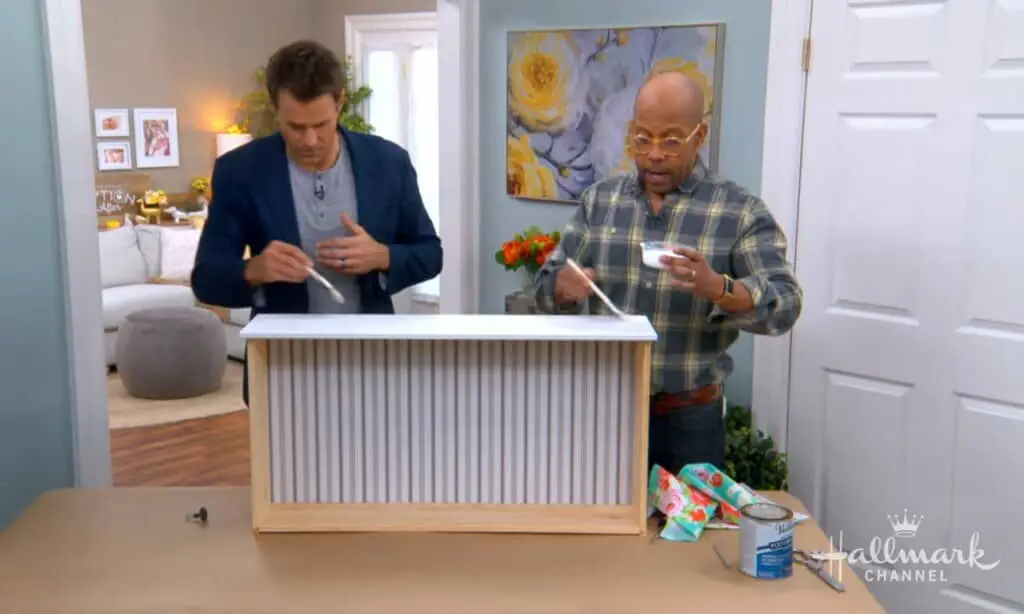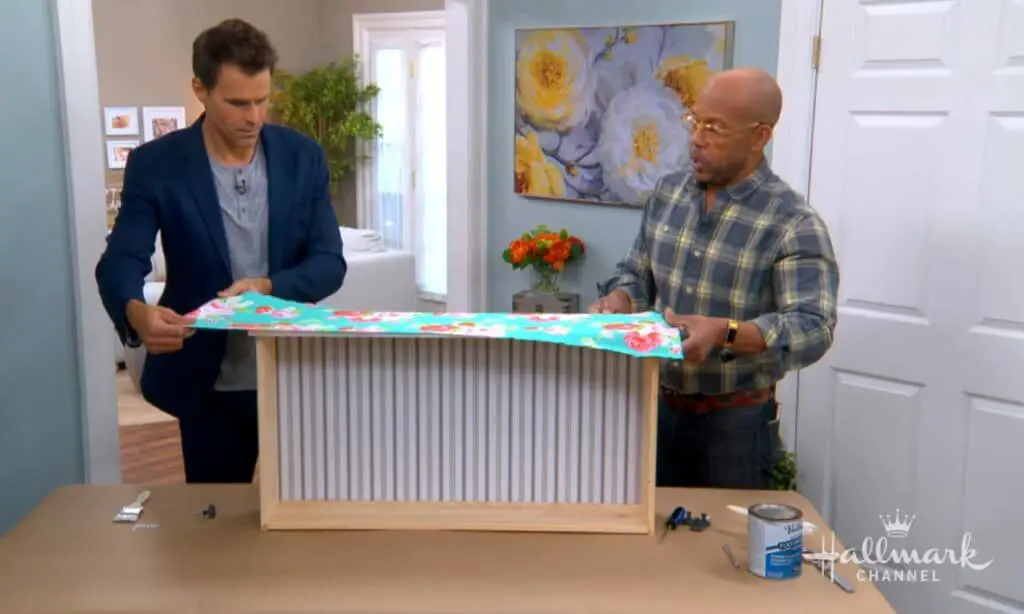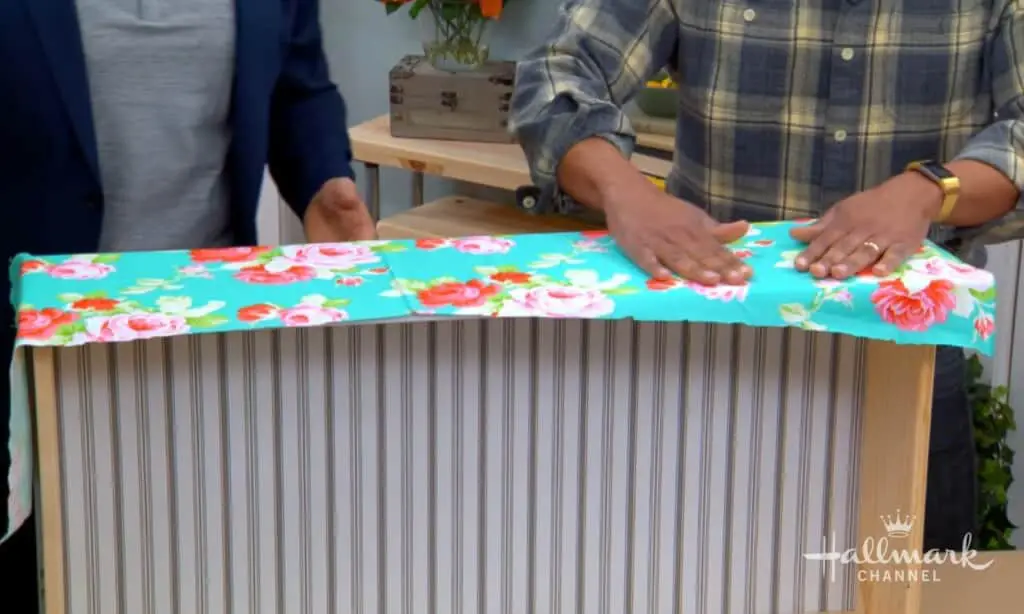The how-to’s on how to glue fabric to wood is something many people wonder about. It is a very specific question that can be answered in different ways depending on the type of project you are working on. We will go over the most effective materials and methods for how to glue fabric to wood, so read through until you find what best suits your needs!
How to Glue Fabric to Wood
1. Gather your supplies and materials.
The first thing you want to do is gather all your supplies. This means pieces of fabric, wood board, glue, and also included in this list would be several optional tools depending on what project you’re working on:
- Brush/sponge (for applying glue)
- Measurement tools like a ruler or T-square
- Rotary cutting, scissors, or X-Acto knife with fresh blades
The type of glue you choose will depend on the type of fabric, the strength of the bond between the two materials as well as the size of the glued area. Here are a few glue types to consider:
- Fabric glue: Fabric glue is either glue that comes in a glue stick form or glue that is applied with water. This type of fabric glue works best on lightweight materials since it’s highly absorbent, but it is also a glue that can be peeled off. For this reason, we recommend using fabric glue if you’re working on a small project that won’t be handled or used too often.
- Wood glue: This glue is also recommended for bigger projects since it has a stronghold and dries clear, so there will be no visible glue marks. We recommend this glue if you’re working on larger surfaces or items that won’t require any repositioning during the drying time (it can take several hours to dry).
- Hot glue: The most common glue used for gluing down fabrics is hot glue since it’s easy to use, fast-drying (which means you can start working right away), and has a stronghold once dry. We recommend using this glue if your project or surface area isn’t too big as well as if you want glue that can be easily peeled off if needed.
- Spray Adhesive: Spray adhesives are some of the most glue that can be bought at craft stores. It is easy to use and works well since you don’t have to wait for the glue to dry plus it’s already in a spray form so application is quick and easy. We recommend this glue if you’re working on a big project or for materials that are thick.
- Superglue/CA glue: This glue dries in less than a minute and has an extremely strong hold, making it the most secure glue for gluing fabric to wood. It’s not ideal though if you’re working with larger surfaces or items since it can easily drip off of corners/edges more quickly compared to other types of glue.
- Epoxy resin glue: If you are looking for something that will give your project longevity, this would be another option available on how to glue fabric to wood. Epoxy resin is also great because it doesn’t dry tacky which means no need to clamp down any glued areas!
No matter what glue type you end up choosing, we recommend testing it out in an inconspicuous area so you can see how well the glue works and dries for your particular situation before applying it to the entire surface of fabric and wood piece.
You should prepare a flat surface to work on, such as a workbench or countertop. It helps your project be sturdy and avoids glue from dripping onto furniture around it.
After all of these supplies have been gathered, it’s time to prep them for usage.
2. Prepare the fabric and the wood
Measure the area of your project and cut out the fabric and the wood to match the size and shape you want. You should consider leaving an extra inch of fabric on all sides. You can always trim the excess material later but if it shrinks after application then there’s not much that can be done about it!
After you cut out your fabric and wood, make a test fit. Make sure the corners match up to how you want them to look when finished. Also, check for any irregularities in how it fits together where glue may show through seams or creases. This is important because what’s inside of those gaps will be visible on the final product!
Sand down the edges and the surface of the wood if needed. Clean the surface of the wood you want to glue fabric to with a damp cloth and dry it off.
Be sure to make sure all your supplies are clean before getting started!
3. Apply glue to surface of the wood
Apply glue to the wood from the outside and then brush it towards the middle. Do not use too much glue because you don’t want the excess to seep through and be visible on the front surface of your project!
In some cases, you will have a second coat of glue applied so put on heavy coats as instructed by your how-to instructions. This may be necessary if the first layer is not visible. In most cases, if you’re working on smaller projects like runners or coasters, one downward swipe down the middle will be enough

4. Place the fabric on top of the wood
Once all surfaces are ready, carefully apply fabric on top of the wood, making sure that it is aligned correctly.
Press down firmly on the glue and smooth out any wrinkles in your material as you go along so they don’t show after being glued down.
You can place a heavy object over the fabric or smoothing it evenly with a hot iron.


5. Allow it to dry completely before using
Clean up any glue residue with a wet cloth and let air-dry before handling again. Depending on how much glue was applied, it should take about 15 minutes for your project to dry. However, longer is better if there are heavy coats of glue or more layers that need time to adhere together properly.
Once dried, trim off any excess fabric from around the edges with scissors or an Exacto knife.

FAQs
Does hot glue wash off fabric?
Answer: Yes, hot glue does wash off the fabric and can be easily removed with soap and water.
Hot glue is an adhesive used in the making of costumes and other craft projects. Hot glue usually starts out as semi-solid before it sticks to wet surfaces like fabric. Hot glue also often has a strong scent that fades as it dries, but this too can be easily washed off with soap and warm water just as the adhesive is removed from fabrics.
